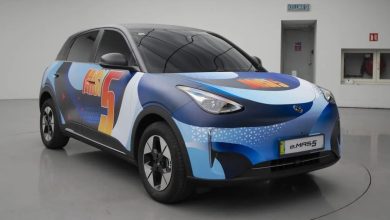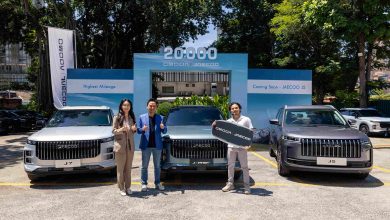A PHEV Proton e.MAS 7 WILL Eventually Be Launched In Malaysia
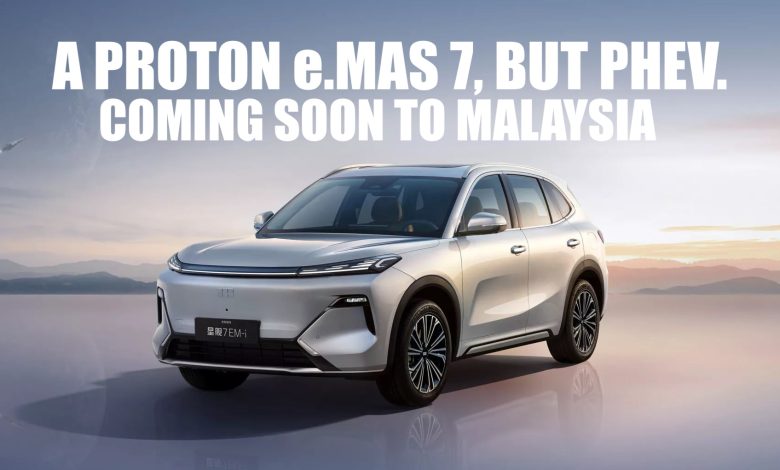
The big question now is whether this e.MAS 7 PHEV will be close in price to its all-electric sibling.
The Proton e.MAS 7 has certainly piqued the interest of Malaysians currently considering an electrified transition, especially as early impressions of it shows that the roaring lion marque has indeed brought to the segment a car that is likely both better and cheaper than all its competition.
But just before putting down an order for one of these first EVs from the Malaysian automaker, those who may not be entirely convinced of a fully electric future just yet should note that there will be a PHEV alternative of this e-SUV available soon!

Yes, whispers on the grapevine at Proton have indeed indicated that the e.MAS 7 will eventually be available over here in both full EV and PHEV forms. And this is not exactly new news actually, considering that the e.MAS sub-brand from its inception has hinted that it could expand it’s New Energy offerings to plug-in hybrids, with the Malaysian marque having recently (and very quietly) also trademarking the name ‘e.MAS 7 PHEV’ over here too.
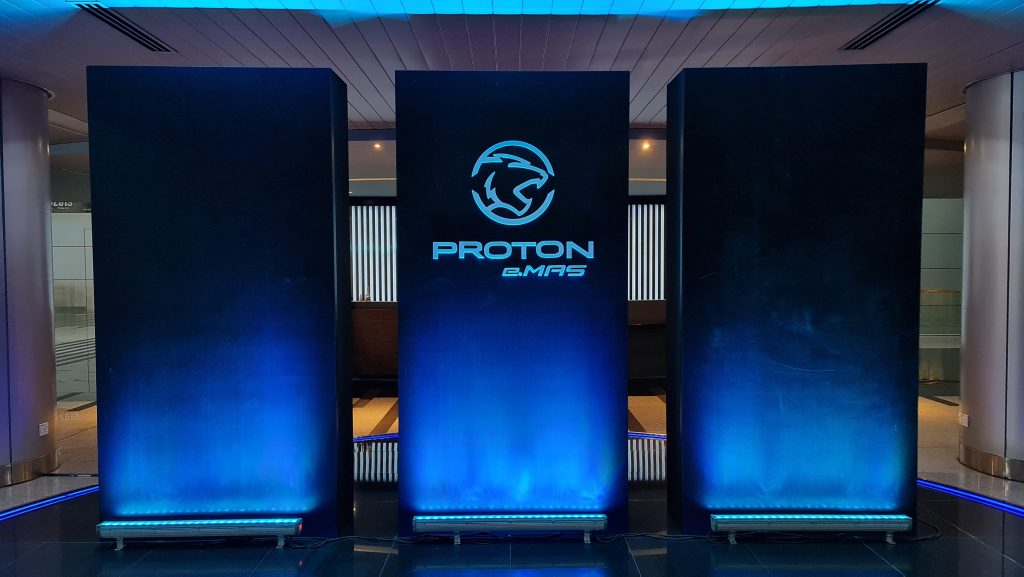
Proton has unfortunately not provided a timeline regarding this imminent launch, but the word within the company is that this PHEV may soon be in e.MAS dealerships nationwide within 12 months of its fully-electric counterpart. Now as for the specs of this plug-in hybrid meanwhile, a quick look at the Geely Galaxy Starship 7 should provide a pretty good indicator of what could be expected.
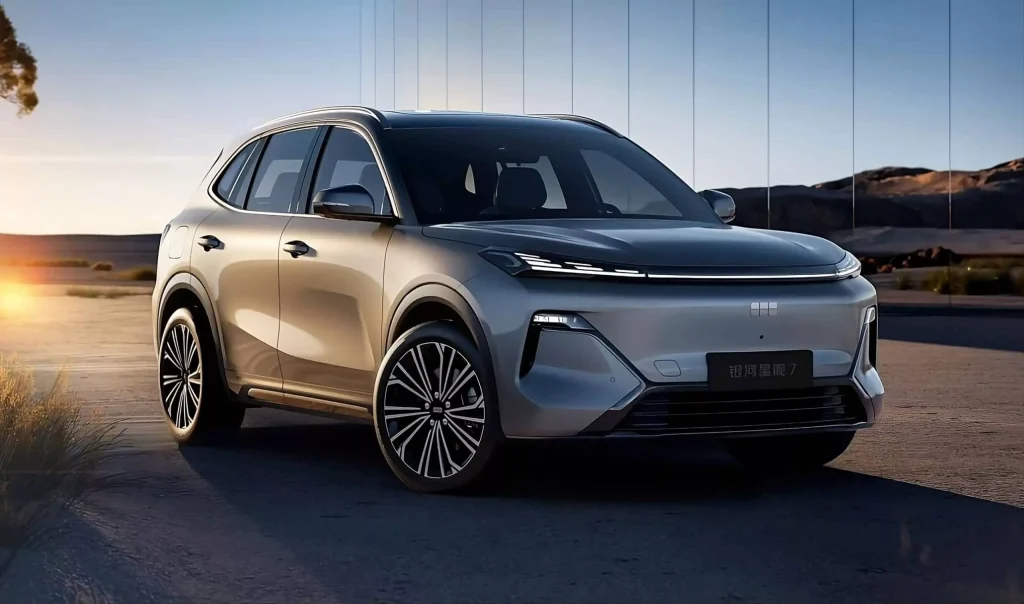
The PHEV counterpart to the Geely Galaxy E5 (for which the Proton e.MAS 7 is the mechanical twin/rebadge of), the Galaxy Starship 7 was unveiled a little over a month ago in its home market of China. And it has to be said that its launch has certainly been causing quite a stir over there, particularly because the second-generation of Geely’s NordThor 2.0 electrified powertrain that made its debut in this plug-in hybrid SUV is currently claiming some almost incredulous fuel efficiency and combined range figures.
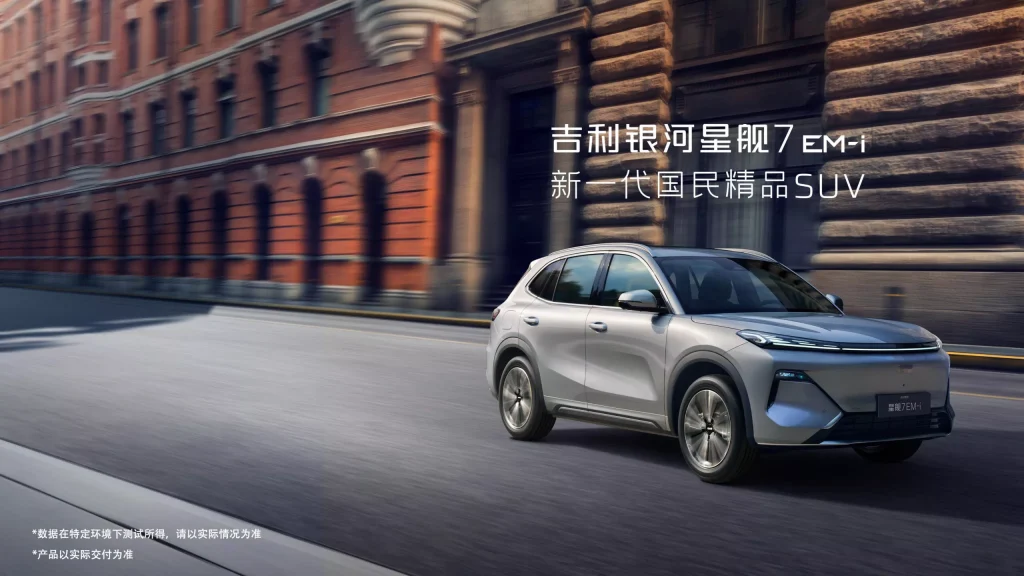
Badged EM-i, what is to be found under the hood of the Galaxy Starship 7 is 1.5 litre naturally-aspirated petrol four-cylinder that is mated to an 11-to-1 electrified dedicated hybrid transmission (E-DHT). The ICE component itself churns out a not-particularly-hot 111 PS and 136 Nm of torque, while the combined electrified output is admittedly to be rated at a still-rather-modest 218 PS and 262 Nm.
A quick look at its performance figures too will further show that the Galaxy Starship 7 is not exactly the speediest SUV around, with its century sprint time of 7.5 seconds trailing the 6.9-second figure put down by its all-electric sibling. Though as alluded to above, where this PHEV outputs some truly impressive figures is when efficiency comes into the picture.
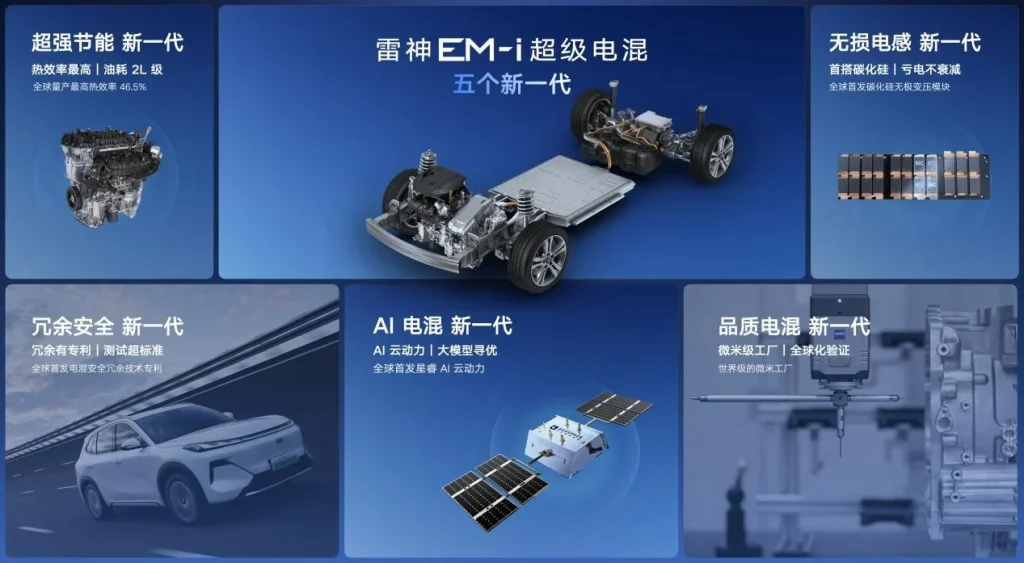
For one, the Chinese automaker has claimed that its 1.5-litre four-pot could achieve a record thermal efficiency of 46.5%. How Geely managed to make its engine more capable of converting its burnt fuel into actual useful mechanical work than a Mercedes-AMG One hypercar is apparently down to redesigned engine internals, which helped to increase air swirl within the combustion chamber.
Moving on to the electric side of things meanwhile, the Starship 7 is currently offered with two Aegis short-blade lithium iron phosphate battery packs: an 8.5 kWh unit that offers a modest 55 km of EV range, and a larger 19.09 kWh battery that sees for it to tout a more impressive CLTC-rated zero-emissions driving distance of 120 km. Where the wow-worthy aspect really comes in however is when paired with the petrol engine and a 51 litre fuel tank, total range for this PHEV is then quoted at up to 1,420 km, while fuel consumption is rated at 3.75 litres per 100 km.
Just as icing on the cake for this PHEV powertrain here too, Geely says the Galaxy Starship 7 supports DC fast charging of up to around 36 kW. This therefore sees for it to be capable of topping up the drive battery from 30 to 80% in just 20 minutes.
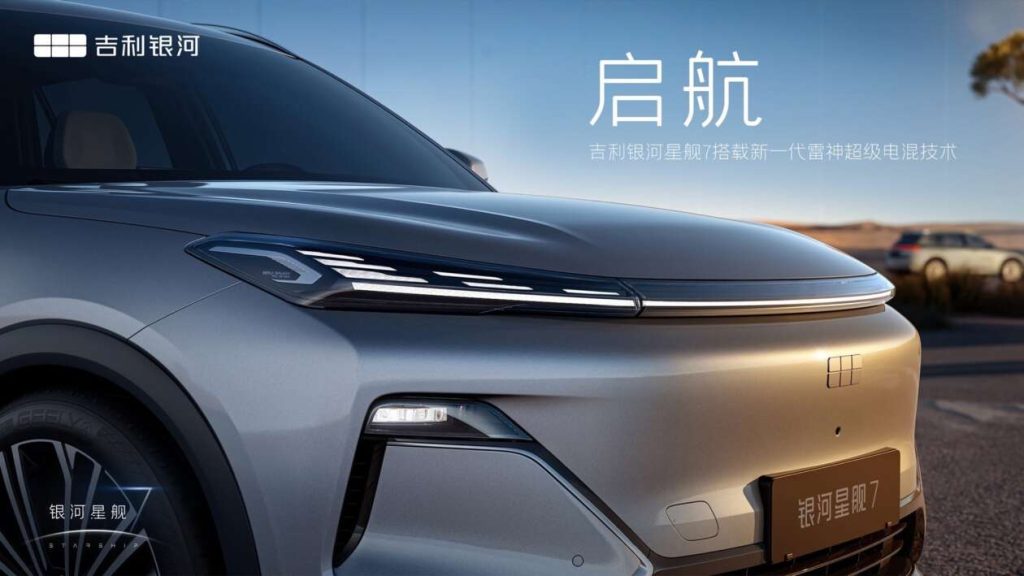
Now as for the rest of the car on the other hand, the PHEV Starship 7 is expectedly to look a lot like its all-electric E5 counterpart. There are however a few subtle differences between the two, with the one featuring a tailpipe round its rump also being the only one with a full width light bar up front, as well as conventional pull-type door handles down the side (instead of flush pop-out items).
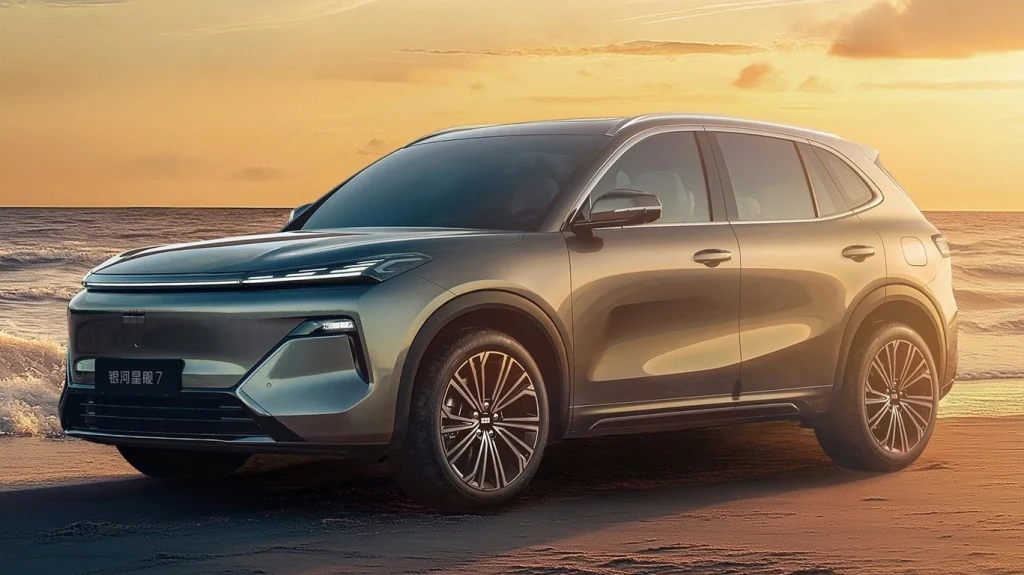
And upon mention of its rump, it is also worth pointing out that the PHEV also actually features a slightly different backside to its fully EV sibling. The lighting signature of its full-width rear light bar has been mildly revised, while the bigger change on the Starship 7’s derrière is for its number plate recess to have been relocated from the bumper to the tailgate (for an almost Cayenne/Leapmotor C10-like rear end look now).
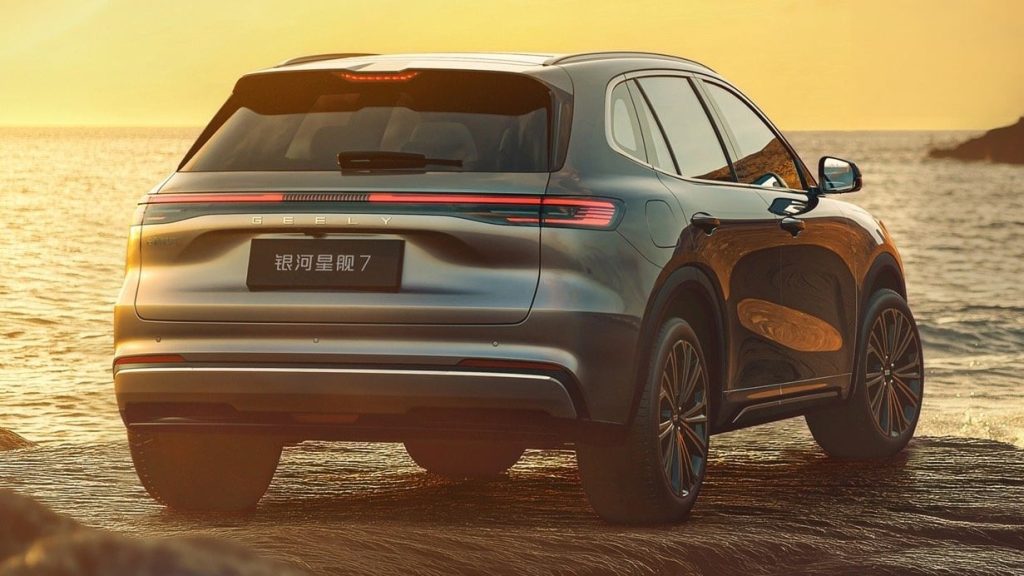
Interestingly enough here too for looking almost identical to each other, park the Starship 7 next to its all-electric counterpart and it’ll be clear to see that the former is ever so slightly larger. The PHEV is to be 4 mm wider (1,905 mm) than the full EV, 15 mm taller (1,625 mm) and a full 125 mm longer (4,740) with a 5 mm (2,755 mm) stretch in its wheelbase as well.
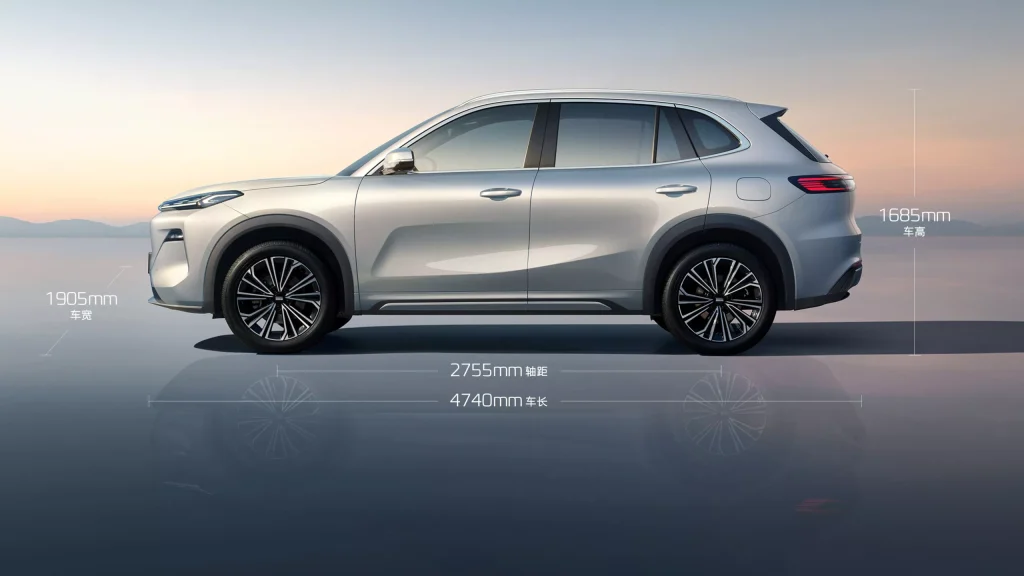
Finally finishing up within, the Starship 7 shares all the same screens and general interior layout as the Galaxy E5. This PHEV however does feature a simpler centre console design, with the EV’s multifunction knob now surrounded by the handy addition of physical climate controls.
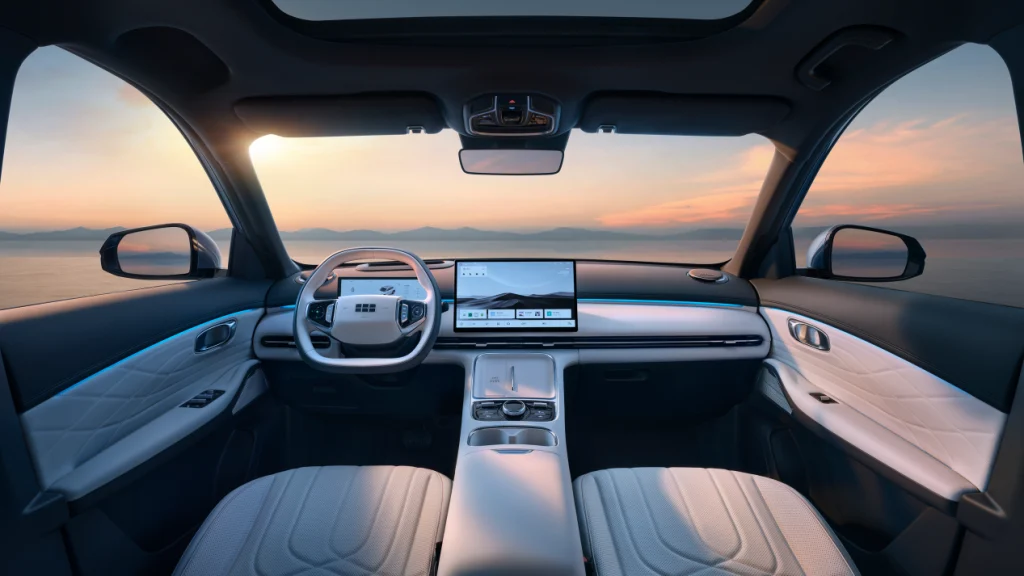

The entry-level Starship 7 Sailing Edition currently retails in China for an incredibly low 99,800 yuan (RM 60,500), with prices for the flagship Pilot Edition that comes with the larger 120 km-capable battery only coming in at 132,800 yuan (RM 81,000). So could Proton actually launch the e.MAS 7 PHEV at a price that is comparable to its all-electric counterpart?
Well, the lack of any tax-free incentives on PHEVs over here will probably slash any dreams of it being all that close in price to its fully-electric sibling. That said though, both the Haval H6 HEV and Jaecoo J7 PHEV has shown that a plug-in hybrid SUV could indeed come in at a reasonably low price. So there is still actually hope yet for it to potentially come in at the RM 120,000 mark…?


